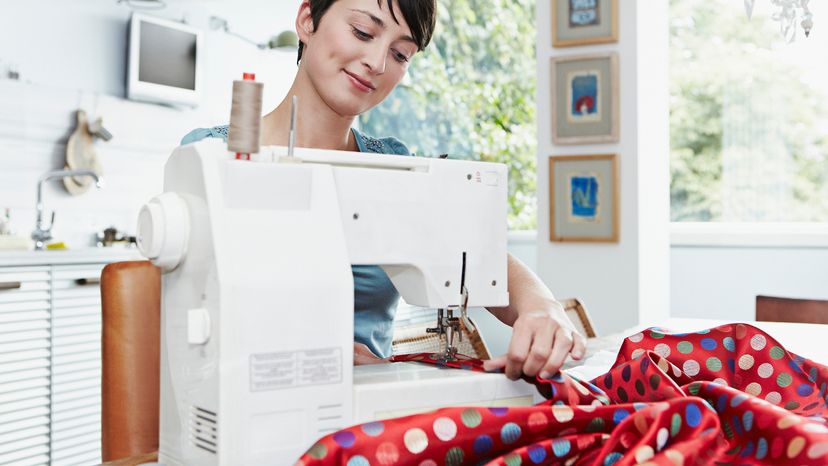Before you look for a first sewing machine or a specialized machine for more advanced projects, it's important to know what each is capable of achieving. Available from different brands and with the ability to work with stretchy fabrics and help with garment construction and detail work, here are multiple types of machines that you should know before you embark on your sewing journey.
1. Mechanical Sewing Machine
This standard machine is operated manually with mechanical controls for stitch length and width adjustments. It does not have as many built-in stitches as other models. This machine is optimal for beginner sewists as a first machine as well as those of an advanced skill level.
2. Computerized Sewing Machine
Also known as overlock machines, these technologically advanced machines have electronic controls, programmable stitch patterns and an LCD screen for easy customization.
Computerized sewing machines can make the stitching process easier through automated stitch selection, precise stitch control, programmable stitch patterns, an automatic thread cutter and stitch adjustment and editing.
3. Serger Sewing Machine
Also known as an overlock machine, this machine trims and finishes fabric edges simultaneously while creating professional-looking seams.
4. Embroidery Machine
Specifically designed for intricate embroidery work, it features built-in embroidery designs and can stitch complex patterns automatically.
5. Sewing and Quilting Machine
Designed for quilting projects, it offers a larger sewing surface, adjustable stitch length and a wide variety of quilting stitches.
6. Industrial Sewing Machine
Built for heavy-duty use in commercial settings, it provides high-speed stitching and can handle thick or tough fabrics and multiple layers that most machines cannot handle.
7. Portable Sewing Machine
Lightweight and compact, it is easily transportable and suitable for on-the-go or small-scale sewing projects.
8. Handheld Sewing Machine
This small, battery-operated device works for quick repairs and stitching on-the-spot, making it ideal for small jobs and travel.
9. Cylinder Bed Sewing Machine
This machine features a cylindrical bed that allows sewing in circular or cylindrical items such as cuffs, sleeves, and bags.
10. Blind Hem Sewing Machine
Specifically designed for creating invisible hems, it uses a special foot and stitch to achieve seamless, nearly invisible finishes.
11. Coverstitch Machine
Primarily used for hemming and topstitching knitted fabrics, it produces a professional-looking coverstitch on the top with a double or triple row of stitches on the underside.
12. Buttonhole Machine
Designed to automate the buttonhole-making process, it creates precise and consistent buttonholes with the touch of a button.
13. Leather Sewing Machine
Built with heavy-duty components, it has the strength and durability needed to sew through thick and tough leather materials.
14. Multi-needle Embroidery Machine
This kind of machine enables simultaneous stitching with multiple needles, allowing for faster embroidery production and intricate design possibilities.
15. Long-Arm Quilting Machine
Designed specifically for quilting large projects, it features an extended arm that allows for easier handling and maneuvering of bulky quilts.
16. Button Sewing Machine
Designed specifically for attaching buttons to garments, it automates the button-sewing process for efficient and precise results.
17. Chain-stitch Machine
This sewing machine creates a series of looped stitches that resemble a chain and is commonly used in decorative stitching or for seaming and hemming lightweight fabrics.
18. Zigzag Sewing Machine
This type of sewing machine provides the ability to create zigzag stitches, essential for stretch fabrics, appliqué work and decorative stitching.
19. Hand Crank Sewing Machine
Operated manually with a hand crank, it is a vintage-style machine popular among sewing enthusiasts and collectors.
